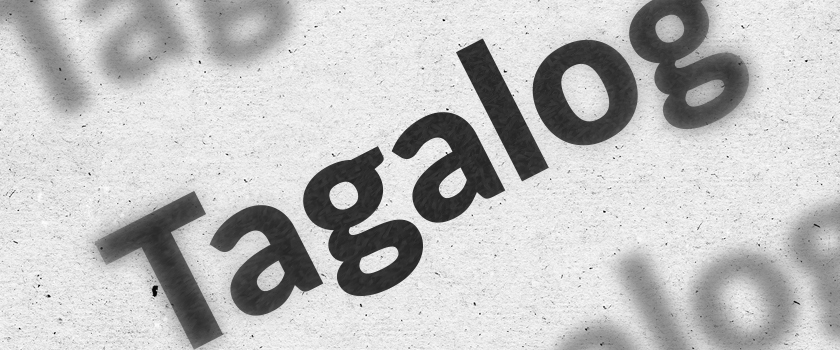Tagalog is an Austronesian language spoken as a first language by a third of the population of the Philippines and as a second language by most of the rest. It is the first language of the Philippine region IV (CALABARZON and MIMAROPA) and of Metro Manila. Its standardized form, commonly called Filipino, is the national language and one of two official languages of the Philippines. It is related to—though not readily intelligible with—other Austronesian languages such as Malay, Javanese, and Hawaiian.
The word Tagalog derived from tagailog, from tagá- meaning “native of” and ílog meaning “river”. Thus, it means “river dweller”. Very little is known about the history of the language. However, according to linguists such as Dr. David Zorc and Dr. Robert Blust, the Tagalogs originated, along with their Central Philippine cousins, from Northeastern Mindanao or Eastern Visayas.
The first written record of Tagalog is in the Laguna Copperplate Inscription, written in the year 900 and uses fragments of the language along with Sanskrit, Malay, and Javanese. Meanwhile, the first known book to be written in Tagalog is the Doctrina Cristiana (Christian Doctrine) of 1593. It was written in Spanish and two versions of Tagalog; one written in the Baybayin script and the other in the Latin alphabet.
Read Also: Tagalog Language Translation Service
Throughout the 333 years of Spanish occupation, there were grammar and dictionaries written by Spanish clergymen such as Vocabulario de la Lengua Tagala by Pedro de San Buenaventura (Pila, Laguna, 1613), Vocabulario de la lengua tagala (1835) and Arte de la lengua tagala y manual tagalog para la administración de los Santos Sacramentos (1850). Poet Francisco Baltazar (1788–1862) is regarded as the foremost Tagalog writer. His most notable work is the early 19th-century Florante at Laura.
Tagalog and FilipinoIn 1937, Tagalog was selected as the basis of the national language of the Philippines by the National Language Institute. In 1939, Manuel L. Quezon named the national language “Wikang Pambansâ” (“National Language”).
Twenty years later, in 1959, it was renamed by then Secretary of Education, José Romero, as Pilipino to give it a national rather than ethnic label and connotation. The changing of the name did not, however, result in acceptance among non-Tagalogs, especially Cebuanos who had not accepted the selection.
Take a look at how we helped our client by localizing their project for Tagalog language. Click here to read the complete case study
In 1971, the language issue was revived once more, and a compromise solution was worked out—a “universalist” approach to the national language, to be called Filipino rather than Pilipino. When a new constitution was drawn up in 1987, it named Filipino as the national language.
The constitution specified that as the Filipino language evolves, it shall be further developed and enriched on the basis of existing Philippine and other languages. However, more than two decades after the institution of the “universalist” approach, there seems to be little if any difference between Tagalog and Filipino.
Are you looking for Tagalog Translation? We are here for your assistance.









